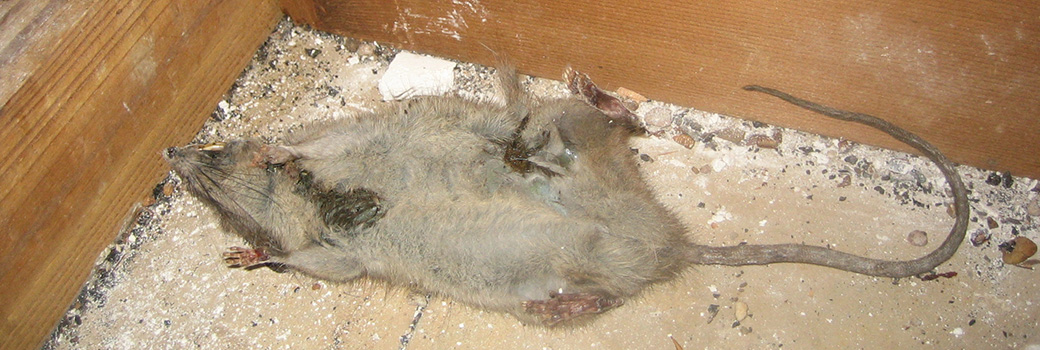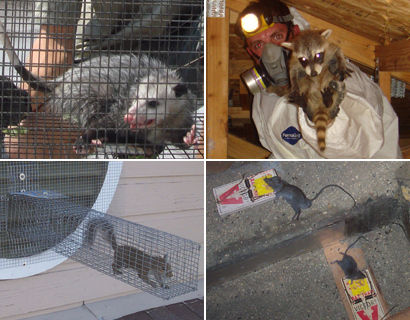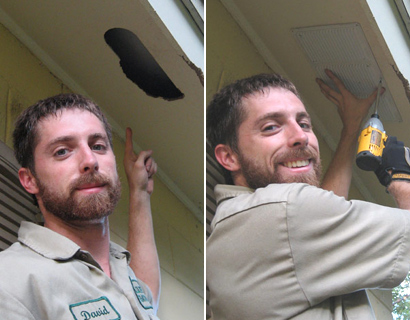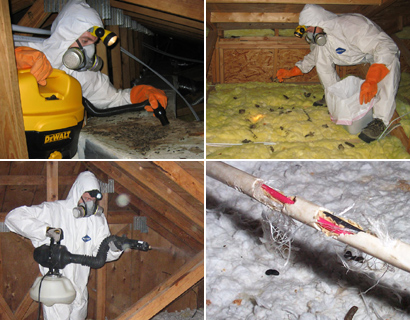- How We Solve California Wildlife Problems
How We Solve Los Angeles Wildlife Problems
INSPECTION: Once on site, we will perform a full inspection of your home and property. This allows us to use the correct strategy and traps. If the animals are in an attic, a full building inspection is crucial, including the following:
- All ground-level areas, such as piper or A/C line entry & exit areas, A/C chase bottoms, ground-level vents, etc.
- All mid-level areas, such as dryer vents, siding gaps, first floor eaves or dormers, etc.
- We inspect the entire roof, including all plumbing stacks, ridge caps, vents, and other potential gaps or holes.
- We also inspect inside your attic, to identify animals and damage they have caused.
- If the animals are outside, we notice many subtle clues that will assist us in a successful strategy.
TRAPPING, EXCLUSION, REMOVAL: Once we understand what animal species we are dealing with, and the problem, we use the most effective means of removing the animals. We use dozens of different types of traps.
- Trapping - If trapping the animal(s) in live cage traps, trap type, set, and location are crucial to success.
- Exclusion - Oftentimes, we are able to simply set one-way doors or other exclusion devices that allow the animals inside a building to safely exit, but never get back inside.
- Removal By Hand - Sometimes we actually remove animals by hand, or with special tools like snare poles.
- The Law - In all cases, we obey state and local laws regarding wildlife, but aim to take the most humane approach.
ENTRY HOLE REPAIRS: Repairs are a crucial step in the wildlife removal process. In many cases, such as bat or rodent control, the job cannot be performed without detailed repairs, and in all cases, sealing the entry holes shut ensures that no future wildlife will ever enter your home.
- 100% of the entry holes must be found, and sealed shut, or the job is not complete.
- Our repairs are professional contractor grade, look good, and when applicable we use steel, which rodents such as rats or squirrels are unable to chew through.
- We give a written guarantee on our repairs against any future animal entry.
ATTIC DECONTAMINATION SERVICES: It may be desirable to clean your attic after we've removed the animals. They can leave behind large amounts of droppings, urine, hair, oils, food, nesting material, and so on. These remnants can attract insects like cockroaches, and the scent left behind can encourage new animals to chew their way into your house. You might experience odor problems from the waste. It's possible that mold will grow on waste areas.
- We remove or vacuum all droppings, or remove all the soiled insulation.
- We fog the attic with a special enzyme-based cleaner that destroys any organic matter and deodorizes the space.
- We repair damage, such as ductwork, electrical wires, pipes, insulation, and more.
Things like rats, bats, and snakes belong outside, thriving in the wild. So why do they end up in our homes? There are many of reasons for this: shelter, food, a place to nest. Maybe the weather got too hot or cold for them and your home seemed the easiet to enter undetected. What ever your case may be, we've got you covered. We handle simple things like inspections and we also do the hard stuff, like trapping, removing, and repairing the damages caused by California's wildlife. We service the following cities: Avocado Heights, Bassett, Citrus, Del Aire, Desert View Highlands, East Rancho Dominguez, Florence-Graham, Green Valley, Hacienda Heights, Hasley Canyon, La Crescenta-Montrose, Ladera Heights, Marina del Rey, Mayflower Village, North El Monte, Quartz Hill, Rose Hills, Rowland Heights, San Pasqual, South Monrovia Island, Topanga, View Park-Windsor Hills, Vincent, Walnut Park, West Athens Long Beach, Anaheim, Santa Ana, Irvine, Glendale, Huntington Beach, Santa Clarita, Garden Grove, Lancaster, Palmdale, Pomona, Torrance, Pasadena, Orange, Fullerton, El Monte, Downey, Costa Mesa, Inglewood, West Covina, Norwalk, Burbank, Compton, South Gate, Mission Viejo, Carson, Santa Monica, Westminster, Whittier, Newport Beach, Hawthorne, Alhambra, Buena Park, Lakewood, Lake Forest, Bellflower, Tustin, Baldwin Park, Lynwood, Redondo Beach, Yorba Linda, San Clemente, Pico Rivera, Montebello, and Monterey Park. We also service the following counties: San Diego County, Riverside County, Orange County, San Bernardino County, Kern County, Ventura County, and Santa Barbara County.
Other Los Angeles animal pest control topics:
Is Skunk Feces Dangerous to Touch or Breathe
What is Raccoon Eviction Fluid
How to Keep Armadillos Off Your Property
What Equipment is Needed To Catch a Bat
To learn more about our services, visit the Los Angeles wildlife control home page.
This month's wildlife how-to article: How to find and remove a dead rat
How to find and remove a dead rat
The most important step in identifying and removing a dead rat is to locate where the stench, or odour is emanating from. If there are no stench around the house, then it may mean that the rat did not die within the house or it died few moments ago , and it takes few hours or days after death, before you can notice any stench. Once you are able to detect any stench , then you can trace the exact place where the stench is coming from. You need to close all doors and windows to restrict air flow and make it easier for you to identify the stench. Secondly, you need to search everywhere, including the walls, attic, garden, garage, patio, deck, Kitchen, bathroom, bedroom and even the roof.

Sometimes, a rat may die in the electrical box outside of your home, this is one area many people don’t suspect and the fact that the box is always closed may even make it more difficult to detect. The heating system, and the Chimney are two other places where one can hardly suspect the presence of rat, but the truth is, those animals can find their ways into every parts of your home.
Sometimes, the best possible way to remove a rat from the most difficult places such as the walls and attic is to allow the smell of its carcass to die down first, and then break through the walls and with the aid of a glove, remove the carcass and any other leftovers within. The duration of time for the rat to decompose will depend on a number of factors, these include; the size of the rat, humidity, temperature and the presence of decomposers such as flies. Unfortunately, it may take as much as 2-3 weeks for a big rat to decompose completely.
In most cases , you will have to spend some money to renovate any damages to the parts of the wall, attic, window or any other part of your home that you broke when searching for a dead rat. In the attic for instance, rats might have damaged some components such as the Insulator and some damages may be incurred while you are searching for the rat too. Once the dead rat has been located, make sure you wear a protective mask and a pair of gloves because the stench and touch of a dead rat can spread some contagious bacteria or parasitic diseases. Carefully evacuate the dead rat and put it in an enclosed plastic bag and dispose off in a closed bin immediately.
It is ideal to find and remove a dead rat by yourself, especially if you can locate the rat . Secondly, the costs of animal control specialists may be too high for you.





